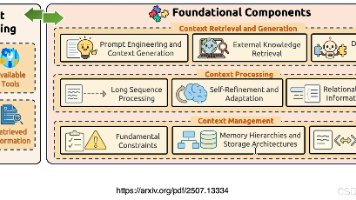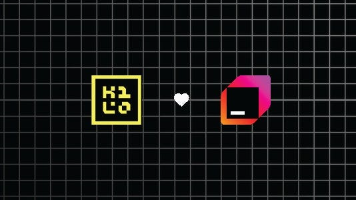使用VSCode开发少儿编程项目:蚂蚁农场模拟
蚂蚁农场模拟项目摘要 这是一个面向少儿的Python编程教学项目,使用Pygame在VSCode中开发简易蚂蚁行为模拟系统。项目包含以下核心特点: 教育目标:培养基础编程能力(变量、循环、类)、逻辑思维和生物模拟概念 主要功能: 模拟蚂蚁觅食和回巢行为 可点击屏幕添加食物 实时显示蚂蚁数量、携带食物等统计信息 技术实现: 采用面向对象设计(Ant/Food/Nest类) 包含简单物理模拟(移动、碰
·
使用VSCode开发少儿编程项目:蚂蚁农场模拟
我将为您设计一个适合少儿的蚂蚁农场模拟项目,使用Python和Pygame库在VSCode中开发。这个项目将模拟蚂蚁在农场中的基本行为,如寻找食物、返回巢穴等。
项目概述
蚂蚁农场模拟是一个教育性的编程项目,旨在帮助少儿学习:
- 基础编程概念(变量、循环、条件判断)
- 面向对象编程基础
- 简单的生物模拟
- 问题解决和逻辑思维
项目结构
ant-farm-simulation/
├── main.py # 主程序文件
├── ant.py # 蚂蚁类定义
├── food.py # 食物类定义
├── nest.py # 蚁巢类定义
├── utils.py # 工具函数
└── requirements.txt # 项目依赖
代码实现
1. requirements.txt
pygame==2.1.2
2. main.py
import pygame
import sys
from ant import Ant
from food import Food
from nest import Nest
from utils import draw_text
# 初始化Pygame
pygame.init()
# 屏幕设置
WIDTH, HEIGHT = 800, 600
screen = pygame.display.set_mode((WIDTH, HEIGHT))
pygame.display.set_caption("蚂蚁农场模拟 - 少儿编程项目")
# 颜色定义
BACKGROUND = (230, 255, 230)
ANT_COLOR = (50, 50, 50)
FOOD_COLOR = (255, 100, 100)
NEST_COLOR = (150, 75, 0)
TEXT_COLOR = (0, 0, 0)
# 创建蚁巢
nest = Nest(WIDTH // 2, HEIGHT // 2)
# 创建食物
foods = [
Food(100, 100),
Food(700, 100),
Food(100, 500),
Food(700, 500)
]
# 创建蚂蚁群
ants = [Ant(nest.x, nest.y) for _ in range(10)]
# 游戏主循环
clock = pygame.time.Clock()
running = True
while running:
for event in pygame.event.get():
if event.type == pygame.QUIT:
running = False
elif event.type == pygame.MOUSEBUTTONDOWN:
# 点击添加食物
x, y = pygame.mouse.get_pos()
foods.append(Food(x, y))
# 更新蚂蚁状态
for ant in ants:
ant.update(foods, nest, WIDTH, HEIGHT)
# 绘制背景
screen.fill(BACKGROUND)
# 绘制食物
for food in foods:
food.draw(screen)
# 绘制蚁巢
nest.draw(screen)
# 绘制蚂蚁
for ant in ants:
ant.draw(screen)
# 绘制统计信息
ants_with_food = sum(1 for ant in ants if ant.has_food)
draw_text(screen, f"蚂蚁数量: {len(ants)}", 10, 10, TEXT_COLOR)
draw_text(screen, f"携带食物的蚂蚁: {ants_with_food}", 10, 30, TEXT_COLOR)
draw_text(screen, f"食物数量: {len(foods)}", 10, 50, TEXT_COLOR)
draw_text(screen, "点击屏幕添加食物", 10, HEIGHT - 30, TEXT_COLOR)
pygame.display.flip()
clock.tick(30)
pygame.quit()
sys.exit()
3. ant.py
import pygame
import random
import math
class Ant:
def __init__(self, x, y):
self.x = x
self.y = y
self.size = 4
self.speed = 2
self.direction = random.uniform(0, 2 * math.pi)
self.has_food = False
self.search_time = 0
self.color = (50, 50, 50)
self.trail = [] # 记录蚂蚁的路径(简化版信息素)
def update(self, foods, nest, screen_width, screen_height):
# 限制轨迹长度
if len(self.trail) > 50:
self.trail.pop(0)
self.trail.append((self.x, self.y))
if self.has_food:
# 如果携带食物,返回巢穴
self.return_to_nest(nest)
else:
# 寻找食物
self.search_for_food(foods)
# 移动蚂蚁
self.x += math.cos(self.direction) * self.speed
self.y += math.sin(self.direction) * self.speed
# 边界检查
self.x = max(self.size, min(screen_width - self.size, self.x))
self.y = max(self.size, min(screen_height - self.size, self.y))
# 随机改变方向(模拟探索行为)
if random.random() < 0.05:
self.direction += random.uniform(-0.5, 0.5)
# 检查是否找到食物
if not self.has_food:
for food in foods:
distance = math.sqrt((self.x - food.x)**2 + (self.y - food.y)**2)
if distance < self.size + food.size:
self.has_food = True
food.amount -= 1
if food.amount <= 0:
foods.remove(food)
break
# 检查是否返回巢穴
if self.has_food:
distance_to_nest = math.sqrt((self.x - nest.x)**2 + (self.y - nest.y)**2)
if distance_to_nest < self.size + nest.size:
self.has_food = False
nest.food_stored += 1
def search_for_food(self, foods):
# 简单寻找食物逻辑
if foods:
# 找到最近的食物
closest_food = min(foods, key=lambda f: math.sqrt((self.x - f.x)**2 + (self.y - f.y)**2))
target_x, target_y = closest_food.x, closest_food.y
# 计算方向
dx = target_x - self.x
dy = target_y - self.y
target_dir = math.atan2(dy, dx)
# 逐渐转向目标方向
angle_diff = target_dir - self.direction
# 确保角度差在[-π, π]范围内
while angle_diff > math.pi:
angle_diff -= 2 * math.pi
while angle_diff < -math.pi:
angle_diff += 2 * math.pi
# 转向目标方向(但不是立即转向,模拟真实蚂蚁行为)
self.direction += angle_diff * 0.1
def return_to_nest(self, nest):
# 返回巢穴逻辑
dx = nest.x - self.x
dy = nest.y - self.y
target_dir = math.atan2(dy, dx)
# 逐渐转向巢穴方向
angle_diff = target_dir - self.direction
# 确保角度差在[-π, π]范围内
while angle_diff > math.pi:
angle_diff -= 2 * math.pi
while angle_diff < -math.pi:
angle_diff += 2 * math.pi
# 转向巢穴方向
self.direction += angle_diff * 0.1
def draw(self, screen):
# 绘制蚂蚁轨迹(简化版信息素)
for i in range(1, len(self.trail)):
alpha = i / len(self.trail) * 100
color = (100, 100, 100, alpha)
pygame.draw.line(screen, color, self.trail[i-1], self.trail[i], 1)
# 绘制蚂蚁身体
pygame.draw.circle(screen, self.color, (int(self.x), int(self.y)), self.size)
# 如果携带食物,在蚂蚁上方绘制一个小点表示食物
if self.has_food:
pygame.draw.circle(screen, (255, 100, 100), (int(self.x), int(self.y - self.size - 2)), 2)
# 绘制蚂蚁方向指示器
end_x = self.x + math.cos(self.direction) * (self.size + 3)
end_y = self.y + math.sin(self.direction) * (self.size + 3)
pygame.draw.line(screen, self.color, (self.x, self.y), (end_x, end_y), 1)
4. food.py
import pygame
class Food:
def __init__(self, x, y):
self.x = x
self.y = y
self.size = 8
self.amount = 10 # 食物量
self.color = (255, 100, 100)
def draw(self, screen):
pygame.draw.circle(screen, self.color, (int(self.x), int(self.y)), self.size)
# 绘制食物量指示器
pygame.draw.circle(screen, (255, 200, 200), (int(self.x), int(self.y)), self.size - 2)
5. nest.py
import pygame
class Nest:
def __init__(self, x, y):
self.x = x
self.y = y
self.size = 20
self.color = (150, 75, 0)
self.food_stored = 0
def draw(self, screen):
# 绘制蚁巢
pygame.draw.circle(screen, self.color, (int(self.x), int(self.y)), self.size)
pygame.draw.circle(screen, (200, 150, 100), (int(self.x), int(self.y)), self.size - 5)
# 绘制存储的食物计数
font = pygame.font.SysFont(None, 24)
text = font.render(str(self.food_stored), True, (255, 255, 255))
screen.blit(text, (self.x - text.get_width() // 2, self.y - text.get_height() // 2))
6. utils.py
import pygame
def draw_text(screen, text, x, y, color, size=24):
font = pygame.font.SysFont(None, size)
text_surface = font.render(text, True, color)
screen.blit(text_surface, (x, y))
在VSCode中设置项目
- 创建新文件夹
ant-farm-simulation - 在VSCode中打开该文件夹
- 创建上述所有Python文件
- 安装Pygame库:
pip install pygame - 运行主程序:
python main.py
教学要点
- 基础概念:变量、循环、条件判断
- 面向对象编程:类、对象、方法
- 数学应用:坐标系统、角度计算、距离公式
- 生物模拟:蚂蚁行为模拟、生态系统基础
扩展建议
- 添加更多蚂蚁行为(信息素追踪、分工合作)
- 实现障碍物系统
- 添加天气或季节变化影响
- 创建更复杂的食物链
- 添加统计图表显示蚂蚁行为数据
这个项目适合8-12岁的少儿学习编程,通过有趣的模拟帮助他们理解编程概念和生物行为。您可以根据学生的水平调整代码复杂度。
更多推荐
 已为社区贡献10条内容
已为社区贡献10条内容








所有评论(0)